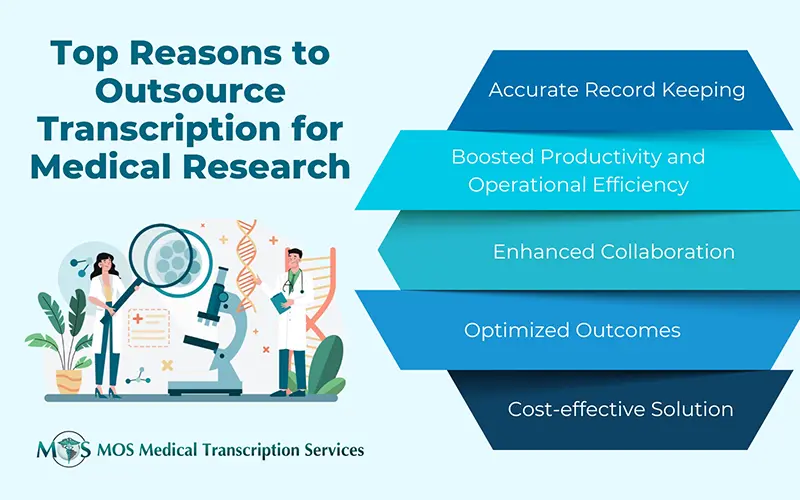Healthcare providers aim to provide high quality care and medical transcription services enable them to maintain accurate and timely documentation. When it comes to surgery, patient satisfaction depends a lot on improving pre- and post-operative care.
Today, patients do their research before they choose a facility and spend considerable time learning about the procedure they are going to have. “If you want to wow patients and ensure they post positive reviews when they leave your facility, pay close attention to their needs as soon as they schedule procedures,” says a recent article in outpatientsurgery.net (Vol XXI, No 10, Oct 2020).
So how can ambulatory surgical facilities improve patient satisfaction? Here are five practices that experts say will make a patient feel better after an operation:
- Understand Instructions Clearly: Patients should make sure they understand the pre- and post-operative instructions that their surgeons provide. A smooth healing process depends on understanding these steps and following them. Generally, physicians take care not to use complex medical terminology when providing instructions and make sure that they can be understood by the layperson. If patients have any questions, such as, when they can resume routine exercise, what kind of diet they should follow, etc., they can find them in the list of dos and don’ts before and after surgery. Surgeons will discuss medications the patient is currently taking or will be prescribed, and provide instructions about when to discontinue medications or start taking them and whether to eat before and after surgery. One study showed that needs-based education reduced patient anxiety and increased patient satisfaction quite significantly, both immediately after the education and postop. Experts recommend using a patient navigator as the point of contact to handle patient concerns, which can improve satisfaction among people scheduled for surgery. For e.g., Boston Out-Patient Surgical Suites in Waltham, Mass., utilizes a patient navigator for all of its total joint cases (www.outpatientsurgery.net).
- Technology to Improve Engagement: Patients should follow the pre- and post-operative care given to them before their procedure. Many facilities use communication apps to connect with patients and send them automated messages and reminders about their care steps before their surgery and instructions to follow pre-op directions. By engaging with their provider using these apps and following instructions, patients can improve the likelihood of successful outcomes. Facilities use a variety of apps that focus on wellness, nutrition, fitness, diabetes management and smoking cessation to engage patients and improve their health and well-being. NYU Langone Health’s Helen L. and Martin S. Kimmel Pavilion provide bedside tablets for patient use as well as a high-definition display medium that allows patients to order meals, read educational materials or review their care plans (www.healthtechmagazine.net).
- Pre-op Mental Preparation: For smooth recovery, patients should keep in mind that preparing for surgery mentally is as important as physical preparation. Studies have shown that poor mental health can negatively impact pain perception, return to work and normal activities, and quality of life. Low preop mental health affects postop recovery including quality of sleep and general well-being. Physicians will assess and document the patient’s preoperative psychological status as part of the preop evaluation. Based on their mental health status, patients will be provided with formal counselling and support to psychologically prepare them for surgery.
- Pain Management: Effective postop pain control is an essential element of surgical care. Physicians use pain management modalities to improve pain as the effects of anesthesia begin to diminish. Patient-controlled analgesia (PCA) involves the use of a computerized pump to dispense physician pre-set doses of pain medication intravenously at the push of a button. Local anesthesia can help control pain and enhance the post-surgical experience. In many facilities, the goal is to reduce high doses of opioids. Modalities used include transverse abdominis plane (TAP) blocks to help manage the post-op pain of abdominal surgery and regional blocks for shoulder surgery, osteotomies, and arthroplasties (www.outpatientsurgery.net). These modalities can reduce postoperative nausea and vomiting (PONV) and reduce the need for oral narcotics.
- Patient-Centered Care: As patients expect a personalized experience, most surgical facilities take steps to provide this. They follow-up on patients within 24 hours to check if the patient is experiencing pain and answer any further questions the patient may have. Staff should be trained in communicating properly with patients and listening to them, understanding their concerns, and delivering patient-centered care. Patients should be informed of delays, if any. Down time should be made as comfortable as possible. Patients can be asked for feedback on their experience and this can be used to address their issues and improve systems and practices.
Focus and commitment on the part of medical staff, clinical teams and nonclinical workers can improve the patient experience. Such commitment can leave little time for electronic health record (EHR) documentation. Outsourcing medical transcription will ensure timely and accurate charting, and help physicians focus on providing their patients with personalized care, which will improve patient satisfaction and drive positive reviews.



